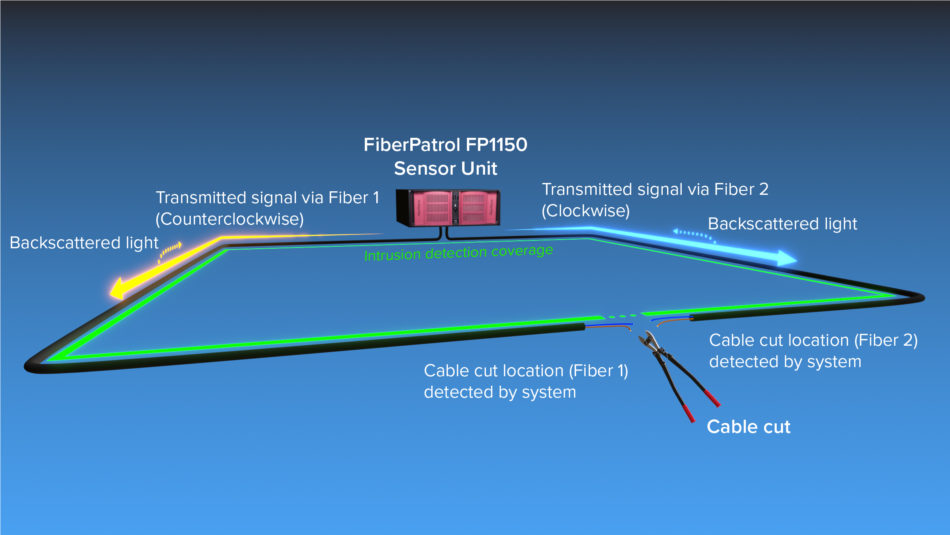Secure Your Home With Trusted Fiber Optic Safety Solutions
In a period where security threats are progressively innovative, the requirement for effective defense solutions is paramount. Fiber optic protection systems stand apart by offering outstanding reliability and efficiency, leveraging sophisticated light transmission technology to boost surveillance abilities. These systems not only offer resistance to electro-magnetic disturbance yet likewise guarantee long-term price efficiency with minimized maintenance needs. Nonetheless, the choice to purchase such a solution entails mindful consideration of different factors. Recognizing the ins and outs of fiber optic safety can illuminate the course to securing your property better. What aspects should be discovered to optimize your financial investment?
Advantages of Fiber Optic Protection
Fiber optic safety and security remedies offer a range of advantages that make them increasingly vital in today's digital landscape. One of one of the most substantial advantages is their superior data transfer capacity, which allows for the transmission of large quantities of information over fars away without significant signal degradation. This ability is especially useful for security systems that count on high-def video monitoring and real-time surveillance.
Additionally, fiber optic cables are naturally more protected than standard copper circuitry. They are unsusceptible to electro-magnetic disturbance, making them much less vulnerable to hacking or eavesdropping. This boosted protection is essential for safeguarding sensitive information and maintaining the honesty of security systems.
Additionally, fiber optics are more long lasting and resistant to ecological variables, such as dampness and temperature level fluctuations, making certain lasting dependability and reduced upkeep expenses. The lightweight nature of fiber optic cable televisions additionally simplifies installment processes, enabling better adaptability in system design.
How Fiber Optic Systems Work
In modern-day safety applications, the operation of fiber optic systems depends on the principles of light transmission with adaptable glass or plastic fibers. These fibers are created to carry light signals over cross countries with very little loss, making them excellent for sending data connected to safety surveillance. The core of the fiber, bordered by a cladding product, guarantees that light signals stay included within the core through a sensation referred to as complete internal reflection.
When incorporated right into safety systems, fiber optic cable televisions can send information from different sensors, such as electronic cameras, activity detectors, and alarms, to a main monitoring station. The high data transfer capability of fiber optics permits the transmission of large quantities of information all at once, enabling real-time security and prompt action to potential dangers.

Kinds Of Fiber Optic Security Solutions
Various kinds of fiber optic security services have actually emerged to enhance monitoring and defense across different environments. One famous remedy is fiber optic border invasion discovery systems (PIDS), developed to check and secure property borders with the detection of resonances and disruptions along fiber optic cords. These systems provide real-time notifies, allowing punctual reactions to unauthorized accessibility efforts.
One more reliable service is fiber optic video clip security. This innovation leverages high-definition cams attached via fiber optic wires to transfer video clip information over cross countries without considerable loss of high quality. This setup is particularly helpful in extensive locations, such as airport terminals and industrial websites, where standard copper cable televisions might fail.
In addition, fiber optic sensing units are significantly utilized for ecological surveillance, identifying changes in temperature, pressure, or acoustic signals that might indicate protection breaches or hazardous conditions. These sensing units supply high level of sensitivity and precision, making them excellent for important facilities security.

Installment and Upkeep Tips
Effective installation and upkeep of fiber optic protection remedies are crucial for guaranteeing their optimum performance and long life. Fiber optic cords must be routed securely, avoiding sharp bends or twists that can jeopardize their stability.
During installment, it is a good idea to conduct comprehensive screening of the system to verify that all elements are functioning properly. Routine upkeep checks ought to be arranged to check the fiber optic cords for any type of signs of wear or damages, in addition to to make certain that links stay safe and secure. Cleaning up the adapters periodically is also essential to stop signal loss due to dust or particles.
Furthermore, keeping an updated inventory of set up elements and their specifications can promote less complicated troubleshooting and upgrades. By sticking to these setup and maintenance ideas, homeowner can maximize the performance of their fiber optic protection solutions, ensuring a reliable defense against prospective risks.
Comparing Costs and Efficiency
When evaluating fiber optic safety services, comprehending the equilibrium between expenses and efficiency becomes extremely important (security fibers). Organizations should take into consideration the upfront investment, ongoing maintenance expenditures, and the long-term worth these systems give. While fiber optic systems might call for a greater initial installment expense contrasted to conventional copper circuitry, their toughness and decreased vulnerability to electro-magnetic interference usually equate my explanation to reduced maintenance prices in time
Performance is an additional vital variable; fiber optic security systems use boosted information transmission rates and improved dependability. They can cover larger ranges without signal destruction, making them perfect for extensive properties or remote locations. Additionally, the high data transfer ability sustains sophisticated protection applications, such as high-def video clip security and real-time tracking, which are vital for detailed safety administration.
Inevitably, the option in between cost and performance must be guided by details safety demands and run the risk of assessments. Organizations has to examine their distinct needs, thinking about factors like building size, protection threats, and technical advancements. By carrying out a thorough cost-benefit analysis, stakeholders can make enlightened choices that align with their safety purposes while ensuring a sound financial investment in fiber optic innovation.
Verdict
In final thought, fiber optic protection solutions offer considerable benefits in terms of efficiency, integrity, and immunity to environmental interferences. Ultimately, the adoption of fiber optic technology represents a forward-thinking technique to guarding residential or commercial properties against progressing protection threats.